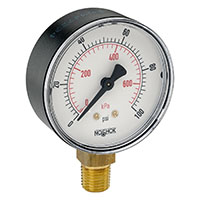

Symbols, abbreviations, or full names for units of length,Īrea, mass, pressure, and other types. You can find metric conversion tables for SI units, as wellĪs English units, currency, and other data. The unit is named after Blaise Pascal, the eminent French mathematician, physicist and philosopher.Ĭonversion calculator for all types of measurement units. The pascal (symbol Pa) is the SI unit of pressure.It is equivalent to one newton per square metre. The definition of a pascal is as follows: The SI prefix "kilo" represents a factor of The conversion ratio from psi to kPa can be determined as follows: Pascals (Pa) .76 Pascals (Pa) kPa value x 1000 Pa psi value x 6894.76 Pa. It is the pressure resulting from a force of one pound-force applied to an area of one square inch. (most of Europe) and in some industries is largely replacing the pounds per square inch (psi) unit. The pound per square inch or, more accurately, pound-force per square inch (symbol: psi or lbf/in² or lbf/in²) is a unit of pressure or of stress based on avoirdupois units. The pascal (Pa) or kilopascal ( kPa ) as a unit of pressure measurement is widely used throughout the world, particularly in countries which follow the metric system. Kilopascal to psi, or enter any two units below: Enter two units to convert From: For example, to convert 35 psi to kPa, multiply 35 by 6. Although the pascal is more widely used in scientific contexts, psi is more often used in everyday contexts, particularly in countries like the United States as well as others under the US customary or imperial systems of units.ġ5 bar = 15 × 14.503773773 psi = 217.You can do the reverse unit conversion from To convert psi to kPa, multiply the psi value by 6.89475729. As such, the prototype pound at the time was known as the avoirdupois wool pound.Ĭurrent use: The psi is fairly widely used to measure numerous pressures, such as tire pressure, scuba tank pressure, natural gas pipeline pressure, among others. The system is believed to have come into use in England around 1300 and was used in the international wool trade. It is based on the avoirdupois system, a system that uses weights in terms of the avoirdupois pound, which was standardized in 1959. Pounds or pound force per square inch (psi, lb/in², pfsi or lbf/in²) is a widely used British and American unit of measure for pressure. Kilopascal : The kilopascal (symbol:kPa) is a non-SI unit for pressure. Psi : Psi is the abbreviation of pound per square inch, and is widely used in British and American. 448.15922 Kilopascal (kPa) Visit 65 Kilopascal to Psi Conversion. History/origin: Pound-force per square inch is a unit that originated in the imperial and US customary systems of units. You are currently converting Pressure units from Psi to Kilopascal. One psi is approximately 6,895 pascals (N/m 2). It is defined as the pressure that results when a force of one pound-force is applied to a one-square-inch area. Pound-force per square inchĭefinition: A pound-force per square inch (symbol: psi) is an imperial and US customary unit of pressure based on avoirdupois units.

Meteorologists and weather reporters worldwide often use this unit for convenience, since working in pascals would result in much larger values.

Millibars (symbol: mb) are also commonly used when referencing atmospheric air pressure, where atmospheric pressure equals 1013.25 mbar (101.325 kPa). The International Bureau of Weights and Measures has specified the bar as a unit that authors should have the freedom to use but has chosen not to include the bar in the list of non-SI units accepted for use with SI. The term "bar" comes from the Greek word "baros," which means weight.Ĭurrent use: Although the bar is a metric unit of pressure, it is not accepted within the International System of Units (SI) and is even deprecated within certain fields. Have you ever wondered why tyre pressure is not measured the same way around the world There are three different types of measurements used around the world for tyre pressure, from PSI to Bar to kPa. History/origin: The unit, bar, was introduced by Vilhelm Bjerknes, a Norwegian meteorologist who founded modern weather forecasting. It is equal to 0.987 atmospheres (101,325 Pa), the unit often used as a reference of standard pressure. Definition: A bar (symbol: bar) is a metric unit of pressure that is defined as exactly 100,000 pascals (symbol: Pa).


 0 kommentar(er)
0 kommentar(er)
